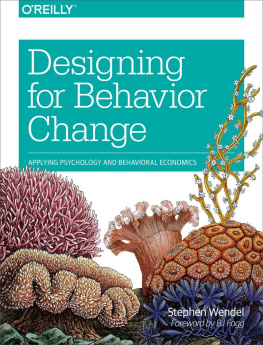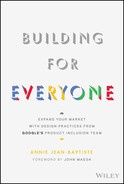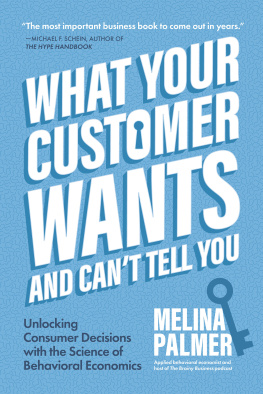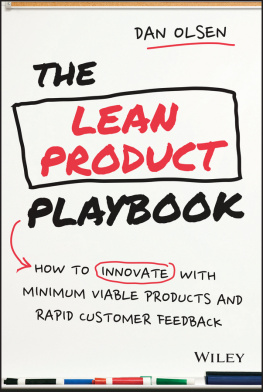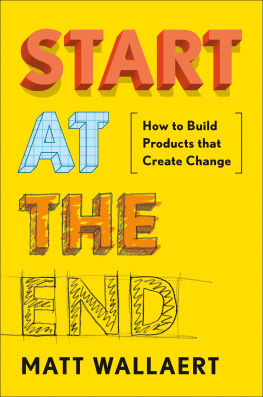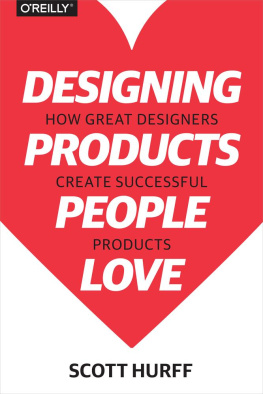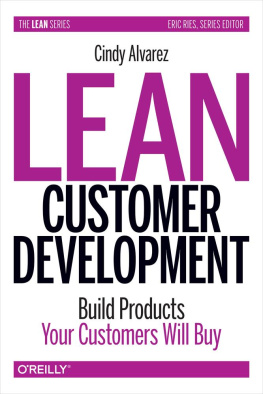If you purchased this ebook directly from oreilly.com, you have the following benefits:
If you purchased this ebook from another retailer, you can upgrade your ebook to take advantage of all these benefits for just $4.99. to access your ebook upgrade.
Foreword
On the first day of class at Stanford, I never know which of my students will change the world.
When student Mike Krieger turned in his first few projects, I saw his potential. He masterfully applied concepts learned in class to his designs. A few years later Mike drew from a class project called Send the Sunshine to create a global phenomenon called Instagram.
The success of Instagram wasnt an accident. Mike had the skills to follow a winning formula: He tapped existing motivation, and he kept things simple. This is the same formula that students in my Facebook course used to engage over 24 million people with their class projects.
Many thousands of people can write code. But only a relative few can get the psychology right. And when it comes to behavior change, the right psychology makes all the difference.
If youre confused about how human behavior works, I say theres a reason. The problem is not you. The problem comes from traditional theories and models about human psychology. Weve inherited some approaches that rarely help design for behavior change in the real world.
Even our language about behavior can mislead. For example, you dont break a habit. Thats the wrong verb. It implies you exert sudden force and the habit goes away. A better verb would be untangle because it sets the right expectations of how to get rid of such behaviors. It requires persistence.
Because I saw how often traditional approaches led to failure, at one point I decided to ignore what Id learned about psychology. I decided to start fresh. With nothing to muddy my view, I explored basic questions: What are the components of human behavior? What are the different types of change? How do you design behavior solutions that really work?
Over time I mapped out 15 ways behaviors can change (the Behavior Grid). I discovered that behavior occurs only when three elements converge at the same moment: motivation, ability, and a trigger (the Behavior Model). And I created a new way to form habits (now called Tiny Habits). My conclusion: Behavior is systematic. And all the pieces fit together.
I began sharing my new insights and methods at Stanford. And I started guiding innovators who enrolled in my Boot Camps. Thats how I met Steve Wendel, the author of this book. He joined me for two days of learning about behavior design.
A common reaction after learning my stuff: Wow, why didnt I see that before? It all makes sense. With the right insights and methods, innovators can reliably design products that change behavior. Its not as complicated as many believe.
In my personal life and my professional work, Im fascinated with this challenge: Design the simplest solution that has the biggest impact. I call this the Feather Principle. Why? Because a feather seems simple, yet it can do so much: insulate, propel, tickle, adorn, and amuse.
You can see a combination of simplicity and power in art and music. Those are the creations I admire most. In our digital world, Twitter and Instagram are paragons of the Feather Principle. You can also find feathers in architecture, food, fashion, and more.
When well designed, a simple thing can have a big impact.
During my Boot Camp, I teach people to explain the Behavior Model (B=MAT) in less than two minutes. You learn to stand up at a white board and map out how human behavior works. I get you ready to teach clients and colleagues. Simple and powerful, this feather changes the game because it changes how people think.
As I talk with innovators in my 15-minute phone chats, I focus them on the essential elements of designing for change. This is a feather I call the Fogg Method. It has three steps:
Select the right target behavior.
Make the target behavior easy to do.
Ensure a trigger will prompt the behavior.
In many cases, people who phone me are stuck in abstractions. I help them understand these three steps and get started on the right path.
When I first shared Tiny Habits in 2011, I didnt expect that years later Id still be coaching people, day by day, to create new habits in their lives. The method works, and people like to share it with friends. So I keep teaching it.
Not only is Tiny Habits a feather, it also follows my three steps. First, people pick a specific new behavior they want in their life, such as flossing. In Step 2, they make the behavior easier in two ways: They scale back the behavior itself (floss one tooth), and they redesign their environment to make the behavior easier (setting floss on the counter). The third step is to find a trigger for the new behavior. In Tiny Habits, the breakthrough is to have your existing routine (brushing your teeth) prompt you to do the new behavior (flossing).
When you put the right pieces together, the habit forms quickly. Some people say it feels like magic. But of course its not magic: Its good design.
Knowing how to design for behavior change gives you power. The methods I teach, the content in this book, and the insights you find elsewhereall this boosts your ability to change peoples lives. Thats a big deal. I strongly believe the best approach is to help people do what they already want to do. In other words, as a behavior designer, you are not manipulating people or transforming them into someone else. You are helping people become a better version of themselves.
The author of this book is the type of person I like to join my Boot Camp. Hes smart and motivated. He asks good questions. He knows how to synthesize and how to extrapolate. And just as important, he wants to use his skills to make peoples lives better. Im proud of Steves work in this book, and he should be proud too. Youll soon see why
But before you turn the page, I have a challenge for you. Its the same one I give to students on the last day of my Stanford classes. My challenge is that youll use what you learn about behavior design to do three things: to make individuals happier, to make households stronger, and to make communities more vibrant.
To achieve these worthy goals, the author and I have invested some of the best days of our lives. We are using our skills to benefit other people and to change the world in good ways. I invite you to join us.
PhD Healdsburg, California October 2013
BJ Fogg

